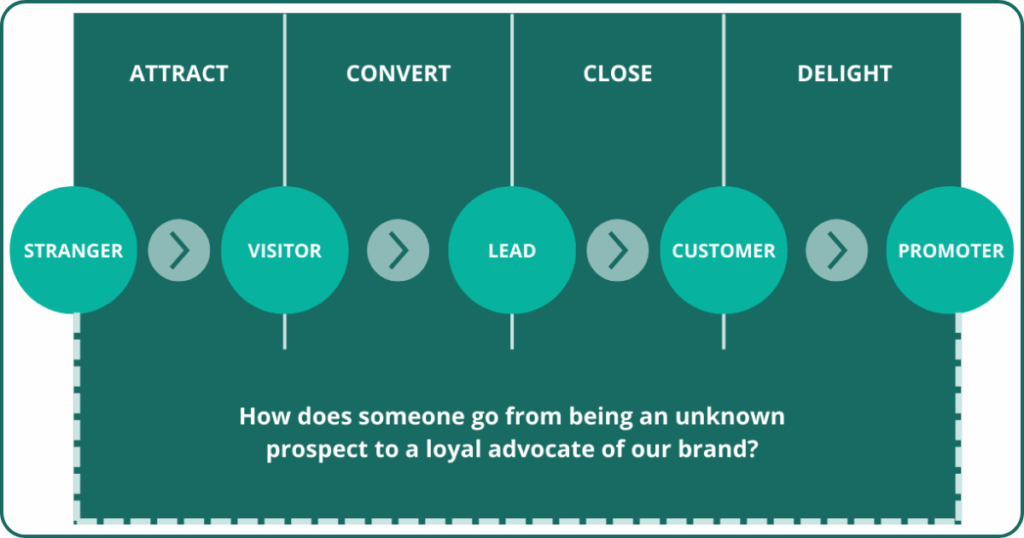The world of customer acquisition is constantly evolving. Instead of push advertising, methods that naturally align with the consumer’s information-seeking and purchasing journey, while also providing real value, are becoming increasingly dominant. This is where inbound marketing comes into play: a strategy that guides potential customers toward a purchase through engaging content and trust building.
In this article, we’ll explain what inbound marketing is, how the process works, what tools lead to success, and why it’s considered one of the most important customer acquisition strategies of the future.
What is Inbound Marketing?
The essence of inbound marketing is that a company does not push its message onto consumers – as is common with traditional advertising – but instead attracts them with valuable, relevant, and useful content. In other words, it uses a pull strategy.
Traditional outbound marketing tools – such as TV ads, cold calls, or flyers – typically rely on one-way communication, where the company sends out a message and the consumer passively receives it. These messages may reach people who aren’t even interested in the product or service, which may come across as intrusive.
Inbound marketing, on the other hand, is built on mutual value creation and trust. The goal is for the potential customer to reach out to the company voluntarily, driven by interest. This is achieved by offering content – such as blog posts, videos, e-books, guides, or social media posts – that answers the customer’s questions, solves their problems, or offers inspiration.
As a result, communication becomes two-way, and the consumer is no longer just a passive recipient but an active participant. They might visit your website, subscribe to a newsletter, download a free resource, or follow your brand on social media, all because the content you offer provides real value.
Inbound marketing doesn’t start with selling, it starts with connection. And that relationship is much more stable in the long run because it’s built on trust and true relevance.
3 Key Differences Between Outbound and Inbound Marketing
- Outbound marketing uses a push strategy, which can often feel intrusive, while inbound marketing attracts and engages the audience on their terms.
- Outbound focuses on grabbing immediate attention, whereas inbound aims to build long-term, trust-based relationships.
- Inbound marketing is more cost-effective over time, as well-crafted content can continue to attract traffic and generate leads long after publication.

Creating a Buyer Persona: The Essential First Step
For inbound marketing to work effectively, you need to clearly define who you’re talking to. A buyer persona is a detailed, semi-fictional representation of your ideal customer, the person you want to reach. It includes key demographic and psychographic traits like age, profession, goals, desires, decision-making factors, and even which channels they use to gather information or make purchases.
A well-developed buyer persona helps you create content that addresses real needs and problems, making it much more likely to attract and engage your ideal audience from the very beginning.
What Does the Inbound Marketing Process Look Like?
Inbound marketing consists of four interrelated phases, which guide potential customers through the buyer journey, from first awareness to brand loyalty.

1. Attract
Where is the customer in this stage? They don’t yet know your company or are just discovering it for the first time. They’re looking for answers, solutions, or inspiration typically through search engines or social media.
What do we do? We offer high-quality, relevant content -like blog posts, social media updates, SEO-optimized website copy, or videos- that grabs their attention. The goal is for them to discover your brand and find your content useful and interesting.
Key principle: Provide value before asking for anything in return.
2. Convert
Where is the customer in this stage? They’ve encountered your brand, like your content, and are open to learning more about your business.
What do we do? We convert the visitor into a lead by offering something valuable in exchange for their contact information (typically an email address). This could be a free e-book, webinar, downloadable template, discount coupon, or demo.
Key principle: The lead magnet should be so valuable that the user is happy to exchange their contact details for it.
3. Close
Where is the customer in this stage? They’re now a lead, you have their contact info, and they’ve shown interest in your offering. They’re considering a purchase but haven’t decided yet.
What do we do? We guide them toward a decision using personalized email campaigns, remarketing ads, discounts, and relevant offers. The goal is to solidify trust and encourage conversion.
Key principle: Tailor your communication, make it feel like the offer is designed specifically for them.
4. Delight
Where is the customer in this stage? They’ve made a purchase and have firsthand experience with your product or service.
What do we do? Don’t stop engaging post-purchase! Send follow-up emails, request feedback via surveys, and surprise them with bonus content or exclusive offers. Your goal is for them to return, and even become a brand advocate.
Key principle: Positive experiences build loyalty, and loyalty leads to repeat purchases and referrals.
What Are the Most Effective Inbound Marketing Tools in Practice?
Below, we explore which tools support each stage of inbound marketing and how to use them effectively.

Content Marketing
Content marketing is a core driver of any inbound marketing strategy. It’s all about attracting potential customers through valuable, informative, and relevant content. Effective content should also be SEO-optimized, making it easy for users to find via search engines.
Main formats include:
- Blog posts & guides: Deep, yet accessible content that solves specific problems
- Social media posts (Facebook, LinkedIn, TikTok, Instagram): Quick, engaging formats for building community
- SEO-friendly webpage: Informative content that performs well in search
- Videos & podcasts: Visual or audio formats that foster a personal connection
The biggest advantage of content marketing is its ability to increase organic traffic, allowing businesses to reach new audiences without relying on paid ads. It also builds trust, as consumers value useful information. It also creates long-term value, as a good blog post can generate leads for years.
Lead Magnets
A lead magnet is an important inbound tool. The idea is to offer immediately useful and valuable content in exchange for the prospect’s contact details, usually their email address. It’s a win-win situation: the user gets something helpful, and the business earns the opportunity to follow up.
Examples of lead magnets:
- An informative e-book or in-depth guide
- Free trial of a product or service
- Exclusive live or recorded webinar
- Downloadable template, checklist, or calculator
People tend to trust brands that offer value upfront, without asking for anything in return. That positive first impression builds momentum for a deeper relationship, which can then be nurtured with tailored content and communication.
Newsletters
An essential tool of the Close stage is email marketing – in newsletters leads receive personalized offers that help them make a purchase decision.
What makes an effective newsletter?
- Segmentation: Group subscribers based on interest or buying stage for targeted messaging
- Relevant offers: Avoid generic emails, offer products or services that truly match each lead’s needs
- Call-to-Action (CTA): Encourage specific actions like “Book a call” or “Buy now with 20% off”
- Value in every email: Share tips, useful info, stories, or industry news so that emails don’t feel like pure promotion
A well-structured email sequence warms up the lead, making the buying decision much easier over time.
Customer Feedback Surveys
Surveys are a powerful tool in the Delight phase. The goal here is to ensure the customer is satisfied, willing to buy again and recommend your brand.
Why use surveys?
- Measure satisfaction: Understand how well your product/service meets expectations
- Generate new ideas: Customers often have great suggestions for future products
- Identify weak spots: Catch issues before they affect your reputation
Asking for feedback also shows customers that their opinion matters, strengthening the relationship. Plus, the insight gathered can guide continuous improvements in your inbound process.

Summary
Inbound marketing isn’t just a tactic, it’s a mindset. From grabbing attention to nurturing long-term loyalty, every step is built on trust and value creation.
Businesses that embrace this approach develop stronger relationships, achieve higher conversion rates, and foster greater brand loyalty, while spending less on advertising.
If you’re looking for a customer acquisition strategy that delivers consistent, long-term growth, inbound marketing gives your business a solid foundation, while keeping your customers engaged, satisfied, and coming back for more.




